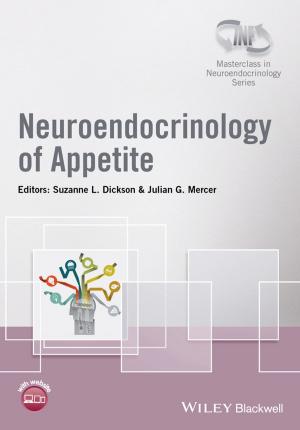Bio-Based Plastics
Materials and Applications
Nonfiction, Science & Nature, Technology, Engineering, Chemical & Biochemical| Author: | Christian Stevens | ISBN: | 9781118676738 |
| Publisher: | Wiley | Publication: | October 2, 2013 |
| Imprint: | Wiley | Language: | English |
| Author: | Christian Stevens |
| ISBN: | 9781118676738 |
| Publisher: | Wiley |
| Publication: | October 2, 2013 |
| Imprint: | Wiley |
| Language: | English |
The field of bio-based plastics has developed significantly in the last 10 years and there is increasing pressure on industries to shift existing materials production from petrochemicals to renewables.
Bio-based Plastics presents an up-to-date overview of the basic and applied aspects of bioplastics, focusing primarily on thermoplastic polymers for material use. Emphasizing materials currently in use or with significant potential for future applications, this book looks at the most important biopolymer classes such as polysaccharides, lignin, proteins and polyhydroxyalkanoates as raw materials for bio-based plastics, as well as materials derived from bio-based monomers like lipids, poly(lactic acid), polyesters, polyamides and polyolefines. Detailed consideration is also given to the market and availability of renewable raw materials, the importance of bio-based content and the aspect of biodegradability.
Topics covered include:
- Starch
- Cellulose and cellulose acetate
- Materials based on chitin and chitosan
- Lignin matrix composites from natural resources
- Polyhydroxyalkanoates
- Poly(lactic acid)
- Polyesters, Polyamides and Polyolefins from biomass derived monomers
- Protein-based plastics
Bio-based Plastics is a valuable resource for academic and industrial researchers who are interested in new materials, renewable resources, sustainability and polymerization technology. It will also prove useful for advanced students interested in the development of bio-based products and materials, green and sustainable chemistry, polymer chemistry and materials science.
For more information on the Wiley Series in Renewable Resources, visit www.wiley.com/go/rrs
The field of bio-based plastics has developed significantly in the last 10 years and there is increasing pressure on industries to shift existing materials production from petrochemicals to renewables.
Bio-based Plastics presents an up-to-date overview of the basic and applied aspects of bioplastics, focusing primarily on thermoplastic polymers for material use. Emphasizing materials currently in use or with significant potential for future applications, this book looks at the most important biopolymer classes such as polysaccharides, lignin, proteins and polyhydroxyalkanoates as raw materials for bio-based plastics, as well as materials derived from bio-based monomers like lipids, poly(lactic acid), polyesters, polyamides and polyolefines. Detailed consideration is also given to the market and availability of renewable raw materials, the importance of bio-based content and the aspect of biodegradability.
Topics covered include:
- Starch
- Cellulose and cellulose acetate
- Materials based on chitin and chitosan
- Lignin matrix composites from natural resources
- Polyhydroxyalkanoates
- Poly(lactic acid)
- Polyesters, Polyamides and Polyolefins from biomass derived monomers
- Protein-based plastics
Bio-based Plastics is a valuable resource for academic and industrial researchers who are interested in new materials, renewable resources, sustainability and polymerization technology. It will also prove useful for advanced students interested in the development of bio-based products and materials, green and sustainable chemistry, polymer chemistry and materials science.
For more information on the Wiley Series in Renewable Resources, visit www.wiley.com/go/rrs















